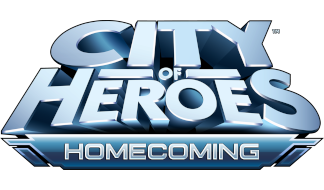
arcanaville
Members-
Posts
56 -
Joined
-
Last visited
Reputation
116 ExcellentRecent Profile Visitors
The recent visitors block is disabled and is not being shown to other users.
-
Mantidae started following arcanaville
-
TomatoPhalanges started following arcanaville
-
FemFury started following arcanaville
-
Completist started following arcanaville
-
Tater Todd started following arcanaville
-
Max Firepower started following arcanaville
-
InfamousBrad started following arcanaville
-
JulioThom33_2 started following arcanaville
-
Sorry for the late reply, I've been busy lately and only checking in periodically. I think this gives me a bit too much credit here. People were theorycrafting almost from day one. Beta, in fact. If I deserve credit for something here, it is bringing some formalism and rigor to the theorycrafting, and for making it a bit more accessible, such as it is, beyond the number crunchers. After all, people were building their "concept builds" using the Brawl Index before I ever invented DPA. Also, the number crunchers I think contributed as much to concept building as anything else. There were a lot of concept builds that were unachievable, until the quants showed they were possible. No stamina builds, for example, were heavily analyzed by the quants. I made an SR build in the pre-IO era that had no stamina, to show it was possible. And most of the number crunchers I respected on the original forums were not religious min/maxers either: they took their number crunching in all sorts of "conceptual" directions, and most of them advised people to play what they liked, not to chase numerically optimal builds. I think the *core* of the numbers community were not pushing min/max as the correct way to play the game. There were people who did that, but I didn't tend to see them make original contributions to the quant community on the forums besides "look at my build" posts. Personally, and I think I speak for a lot of the old school quants of City of Heroes, if you're using calculations to figure out how to play what you want to play, you're doing it right. If you're using calculations to judge how wrong other people's builds are, you're doing it wrong.
-
SIR_ZANE started following arcanaville
-
Reiska started following arcanaville
-
Rare power sets that used to be popular.
arcanaville replied to carroto's topic in General Discussion
Very late to this discussion, but I'll just say that Regen was falling out of favor before the Instant Healing change, a long time ago, and probably not because of anything I had to say directly. Indirectly, my understanding of damage mitigation did permeate outward and cause many other people to evaluate the sets differently than originally, but you could say that about all offensive and defensive sets. Remember that the post Perma-Elude post Perma-IH world is the majority of the existence of the game: collectively we had no idea what was what back in I3. The bottom line with regen is that absent exotic mechanics, you're left with a fundamental problem. Defense and Resistance scale, Regen does not. Which is to say, because defense and resistance block a percentage of the incoming damage, the more damage that comes in the more damage that gets blocked. But Regen is fixed: you heal the same amount per second no matter how much stuff is attacking you. This makes it tricky to balance for scrappers, really tricky to balance for end game scrappers, and an absolute nightmare to balance for tankers. Tankers have fundamental problems that were being discussed when the game was still live; you combine the "Tankers should soak more damage" rule with the "everyone should be able to solo at similar speed" rule, and Tankers are already a contradiction. You add the damage mitigation that doesn't scale to the equation (which has a corollary: it has no downtime) and you have a very interesting game design problem to solve. So why did Brutes get Regen, and why did Tankers get Willpower? That's a very long story. Short version: most people don't see Brutes the way they were originally designed, and players only got Willpower because the devs didn't understand its true power in the first place. I know because I warned them when it was still in beta. -
Interface Procs are Bugged...my Test Results might show why
arcanaville replied to Bopper's topic in Bug Reports
Actually, our team up mechanics were not particularly special originally, except for one thing that is so obvious most people don't even realize the impact this has on the entire game until they played other MMOs. What made teaming completely different from all other MMOs was a feature that had nothing to do with the teaming mechanics: travel powers. Travel powers meant you could team with anyone, anywhere in the game world. We were so spoiled we sometimes got impatient waiting for someone in Skyway to get to us in PI. But travel powers meant you could team with almost any team anywhere, so quickly you could even switch to another alt and then get there in just a couple minutes. Try doing that in most other MMOs. Heck, try doing that in Star Trek Online, where you supposedly have hyperspace drives and it still can take a huge amount of time for someone to get from one side of the quadrant to the other. CoH had, relative to other MMOs, super fast travel. Not only that, super fast travel *with no cooldowns*. And this was before base teleporters. To join a team you have to get to the team. Most MMOs don't make that easy. Some make it ridiculously hard. When I was playing SWTOR, I was on a pick up team where someone tried to join, and we waited literally for twenty minutes for him to get to us before they and we gave up. Not only did it take several minutes for him to physically travel to approximately where we were, he had to *fight spawns on the only road* that led to us. This is something that must have seemed like a good idea on paper, but was ludicrous in practice for an MMO. This only makes sense in a single player game - fighting on the only travel paths to a destination - which is one of the reasons why I coined the term "massively single player game" during SWTOR's Beta.- 45 replies
-
- 4
-

-
Interface Procs are Bugged...my Test Results might show why
arcanaville replied to Bopper's topic in Bug Reports
I'm sure there was some of that influence, but there are lots of games where the in-game fiction is player heroism and the playerbase is not nearly as altruistic or cooperative. I have often wondered how much the massive "failure" of the devs to make a balanced game contributed to this (I say failure because the original Cryptic devs did aim for a conventionally balanced classical MMO and missed spectacularly). City of Heroes was so broken in its game balance that the dog eat dog race to the top wasn't as strong or intense as it is elsewhere. I could just wander around the City with my Ill/Rad and help people take down Jack and Eochai because why not? I didn't need to grind my fingers to the bone trying to accumulate level 61 gear. This is all relative of course: there were always people who thought the game was too grindy or too hard or whatever. But it was easy enough, wide open game play enough, that the people in a position to be helpful also had the time and inclination to be helpful. The game encouraged exploring the "power-space" of builds and abilities, and that encouraged people to share those explorations if for no other reason than it was more fun to share than to keep to themselves. Yes, some people tried to covet fire farms, but for every person doing that there were several sharing builds on how to solo a pylon eight seconds faster than the previous guy. I have often wondered if this is even possible to replicate. These days most broken games are ripped apart by their playerbases, and most balanced games set the players against each other. To make a broken game that encourages its players to cultivate and celebrate that brokenness like it is a privilege, I'm not sure what magic game design dust can do that today starting from scratch.- 45 replies
-
- 3
-

-
Interface Procs are Bugged...my Test Results might show why
arcanaville replied to Bopper's topic in Bug Reports
My rule was: when everyone thought the game was bugged I figured someone would eventually figure it out, but when everyone thought the game was working correctly that was when I should look really carefully, because who else would waste their time checking things everyone knew was working correctly. Probably the most infamous incident of this was when everyone thought high defense was broken, and it turned out that since everyone was testing high defense with luck inspirations, it was actually *those* that were broken (technically, mislabeled). It didn't occur to anyone that inspirations could have a completely different value than what they were labelled as. The Cryptic/Paragon devs did commendable work getting a 2004 MMO with 1990s technology to do things many 2020 MMOs don't do today. But they weren't immune to goofy errors either. I'm happy to see there are people still willing to put that kind of time into CoH to make it better for others. It was always the playerbase that was CoH's most valulable asset. In sixteen years since its launch I have yet to see its equal anywhere.- 45 replies
-
- 10
-

-
If only I could have got the devs to understand them ... just kidding (in case they are still lurking about).
-
In my opinion coincidence and circumstance. First of all, defense sets were easier to look at analytically than any other, so originally it was the scrapper and tanker forums that had more math. Attack sets were actually the first that people wrote things like guides on, but very quickly the mathematical tools to look at those ran out, until people like TopDoc came along with his attack timing thread and I came along with my invention of DPA-focused analysis (in fact, I was the one that coined the acronym "DPA" which stands for "damage per activation-second" to distinguish from "DPS" which was "damage per second" and was used to describe an attacks damage over its recharge time). And looking at things like Control sets or Buff/Debuff sets with mathematical tools was simply beyond the scope of the kind of work most players would or could do. Originally it was tankers that had more focused discussion on the math surrounding mitigation sets, not scrappers. But over time the discussion shifted towards Scrappers in part because I think Scrappers became the much more popular archetype, and in part because coincidentally many of the quantitative tankers retired and many of the newer quants happened to play scrappers. And when people started looking more closely at attack sets analytically, Scrappers could now look at both primaries and secondaries. Tankers could too, but for a long time Tankers were more focused on mitigation and crowd/aggro control, and less on offense (which was a mistake, but that's another story). Scrapper mitigation sets were also more "interesting" to compare and quantify. Stone tankers were in the early days dominated by granite armor, and there were no SR or Regen tankers. Scrappers had an interesting set of mitigation sets to choose from: Regen, SR, and Invuln in particular seemed to be mechanical caricatures: heal, defense, resistance. Dark of course was always the odd one out, but still, if you wanted to analyze any part of the game mathematically, the obvious and "cleanest" thing to look at was heal/defense/resistance. Over time the Scrapper forum gained the reputation of having the most quantitative discussion, and that reputation encouraged and amplified more of the same. Of course, I was a regular on the scrapper forum, so in all honesty that had to contribute something. But conversely, initially I posted mostly on the Blaster forum, as that was what my main was. My second alt was a scrapper. But the scrapper and tanker forums were more receptive to most of my early mathematical ruminations, so that became a feedback loop of sorts.
-
Well, the scrapper forums were one of the few places on Earth where math was a spectator sport.
-
I didn't have the benefit of source code back in the day. I had to resort to less ... straight forward methods. Discovery and sharing has to be its own reward. Because you can't farm merits with forum posts. Unfortunately.
-
Well, this is something you have to work your way up to. One day you're writing a guide to SR, and the next you're writing an entire guide to how tohit mechanics work and then you completely lose your mind and decide to compare scrapper secondaries by comparing average calculations to a hundred million iterations of a combat mechanics simulator and then pretty soon you're being credited with inventing your own measure of time. You have to learn to walk first, so you can stroll your way to the warp drive controls.
-
Apologies for being very late to this party, but I just wanted to mention that the idea of calculating recharge using what Redlynne called a "points" system and Bopper highlights in his OP was the basis for the recharge guide I posted on the old forums, which itself was an update from an older guide written by another player who's name escapes me at the moment. The metaphor of recharge being about reaching a total score rather than being about reaching a total time, and recharge bonuses increasing your rate of points rather than decreasing your deadline time is a good one that most people seemed to get better than the algebra, and also is almost certainly how recharge actually works in the game as well (it is how I would implement it: with pure linear addition rather than any division with round off errors). The super simple explanation we used to use was basically this: if a power took 450 seconds to recharge, assume that the power needed to gain 450 points to fully recharge, and assume the power gets one point per second. Then assume all recharge buffs boost that by exactly the bonus amount for as long as the buffs last. So if you're under +200% recharge, then every second you earn 3 points (1 + 200% more). Most people can then work out on paper with very simple math how long it takes for a power to recharge, or conversely how much recharge it would take - *roughly* - for the power to be perma. One more thing: technically a power like Hasten with 120 seconds of duration and 450 seconds of base recharge takes more than 375% total recharge to become perma, because you have to factor in the activation time of the power (it is even more complicated than that, but that's a different rabbithole involving power activation delays). To a first order approximation, for Hasten to be perma it has to recharge in less than 119 seconds, so that there's enough time to activate it again before it expires. And that requires 378% recharge. This is a small correction factor for a power like Hasten with long duration relative to cast time. But when you get into things like attack chains, as mentioned above, where cast time and cycle time are much closer, this is something that changes the math by more than a small amount.
-
Must have, probably not. But much more benefit that people were giving it credit for. The biggest issue was getting the endurance to power it, and in the post-invention era this was less of an issue. This presumed you took all the SR powers and had the maximum benefit from scaling resists.
-
The developers originally took standard rewards away from custom critters in AE, because it was too easy to make a critter that was basically a punching bag for power leveling. I worked with them to come up with a system that would "judge" a custom critter to determine if the critter was "dangerous enough" to award normal rewards. If not, rewards were nerfed on that custom critter. That's a relatively simple system although the tricky part is actually making it not exploitable by enterprising players. Its possible to extend this outside of AE to modifying rewards in the normal content, but you have to consider two separate things. First, you have to consider what the appropriate scaling rules are in general. That's mathematically hard, but straight forward. The more critical thing is if you want this system to be automated, the system has to somehow figure out what the original intent of the content was, in order to "know" how to modify rewards. What I mean is, if there's some standard content that was explicitly intended to be a "gimme" for the players, it could be considered exploitable to allow players to "scale up" that content for more rewards, knowing that no matter how they scale it up it won't make it really any harder. And when it comes to end game content, there's often very good reasons why end game rewards seem "lower" than you'd expect for their difficulty - for example to prevent end game players from exponentially running away from the rest of the players with a cycle of escalating power gaining escalating rewards. That kind of stuff would make a customizable reward system more tricky to think through what it is even supposed to do.
-
I'll toss this out there as a related idea I was processing right up to shutdown. I had made the big defense spreadsheet where I tried to score defensive sets based on their survivability, using reasonable assumptions. It wasn't perfect and real world combat was highly situational, but it was an interesting and useful metric nonetheless. Could I do the same thing with attack sets? The problem boiled down to the fact that to a first order approximation we can assume all defense powers are always on. Even things like heals can be estimated by averaging their heal out over time, as if they were a constant regen power that was always on. We could *roughly* estimate the strength of the set in a time-invariant way. But attack powers aren't like that, because of attack chains. It isn't possible to simply assume all attack powers are contributing an average amount of DPS all the time. Once your chain is full, no other powers "matter." Long story short: I came up with a metric that tried to roughly guestimate how much damage an attack set could generate by using a rough heuristic. We start by taking all the attack powers and sorting them in descending order by DPA - using "Arcanatime" for the DPA. Basically, we assume that our highest DPA attack is being fired as often as possible, and then we assume that we will try to "fit in" our nest highest, and then our next highest, and so on. If we have AoEs, we assume a certain average number of targets, like three, and calculate as if that AoE was a single target attack with three times the damage. Every attack has a DPS - a damage per second - over its total cycle time (recharge + cast time). If you use the attack as often as possible, that's how much damage it will do over time. If we start with the best DPA attack and work downward, we will add more and more DPS, but if we add everything we will be adding up attacks that take up more than 100% of the time - they won't "fit" into a real chain. So we calculate the attack's "uptime" which is Arcanatime / CycleTime. In other words, this is what percentage of the time you're "attacking" when you cycle that attack over and over. If you use an attack with one second arcanatime and ten seconds cycle time, you're "attacking" 10% of the time. The rest of the time you can use other attacks. So keep adding up attacks until the cumulative total uptime is 100%. If you reach 95% and the next attack would take up another 10%, prorate - add half that attack's DPS to your running total. That's metaphorically like using the attack only some of the time. You now have a list of attacks which are your best DPA attacks (with one "fractional" attack) that you could theoretically cycle constantly, and when you do you will do the total DPS of that set of attacks. This doesn't match reality perfectly, because in practice those attacks won't necessarily form a perfect attack chain. But it gives a kind of rough estimate for the theoretical maximum damage output of the set under theoretically optimal conditions. PS: finding the optimal attack chain is probably a knapsack problem, which means there's no likely way to find it outside of a full search of all possible attack chains. That's why estimates like the above could be useful.
-
Remembered one of the things I hate about CoH... its RNG.
arcanaville replied to Jeuraud's topic in General Discussion
Well, to be fair it was something I often stated on the forums, right up to the moment when it became false and I couldn't say it anymore.






.thumb.png.6334ceca72bf775bd33dc8c52b3484aa.png)

